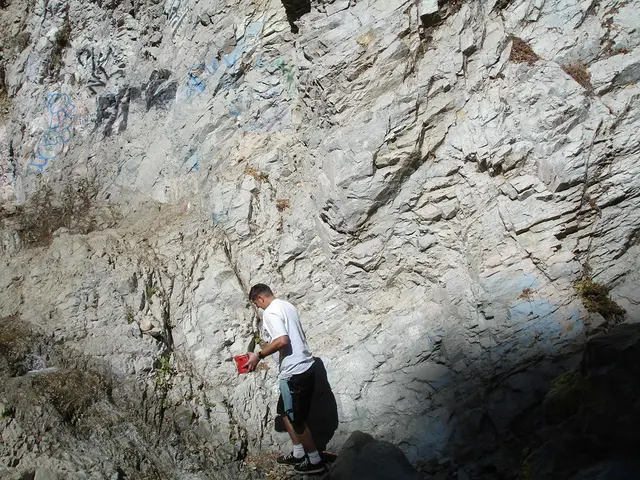Unforeseen downpour in Indian Kashmir results in casualties of several individuals, over 200 people reported missing
In the heart of India-administered Kashmir, a series of catastrophic events have unfolded due to heavy rain and cloudbursts. At least 46 people have lost their lives, and many more are missing following the disaster in the Kishtwar district.
The disaster struck at the Machail yatra pilgrimage route, a trek to the high-altitude Himalayan shrine of Machail Mata. The heavy rain, which occurred at 11:30am local time, was due to a "cloudburst," a sudden and heavy downpour of over 100 mm (4 inches) of rain in one hour. This intense rainfall, typical of cloudbursts, can trigger sudden floods, landslides, and devastation, especially in mountainous regions during the monsoon.
Cloudbursts are caused by the rapid release of a huge amount of rain from high-altitude cumulonimbus clouds. In mountainous regions like Kashmir, they occur frequently during the monsoon season (June to August) due to a complex interaction of warm moist monsoon air, mountainous topography, and atmospheric instability.
The heavy rain in Chashoti, where the disaster occurred, has caused flash floods, sweeping away vehicles and leaving more than 200 people missing. The intense rainfall has also triggered landslides and mudslides, further endangering the region.
The disaster has caused significant damage, with entire buildings being devastated in Chashoti. Rescue operations are ongoing, with army and air force teams, local police, and disaster response officials working tirelessly to locate and save the missing.
Sadly, a large number of pilgrims were washed away during lunch at the scene of the disaster. A community kitchen and security post along the pilgrimage route were also washed away by Thursday's floods.
The Jammu and Kashmir Chief Minister, Omar Abdullah, has stated that all possible resources are being mobilized for rescue operations. He has also cancelled events planned for India's independence anniversary due to the floods. Some of the rescued people have been taken to hospitals.
This disaster in Kashmir is a grim reminder of the destructive power of nature and the vulnerability of mountainous regions during the monsoon season. Recent increases in cloudburst intensity have been linked to climate change, raising concerns about more frequent and severe disasters.
Our thoughts are with the families affected by this tragedy, and we hope for a swift and successful conclusion to the ongoing rescue operations.
[1] Cloudburst (Wikipedia) - https://en.wikipedia.org/wiki/Cloudburst [2] Orographic lift (Wikipedia) - https://en.wikipedia.org/wiki/Orographic_lift [3] Monsoon (Wikipedia) - https://en.wikipedia.org/wiki/Monsoon [4] Climate change and cloudbursts (Scientific American) - https://www.scientificamerican.com/article/climate-change-and-cloudbursts/
- The heavy rain and cloudburst in India-administered Kashmir have been linked to climate change, as research suggests increases in cloudburst intensity due to global warming.
- As the monsoon season in Kashmir is known for its potential for orographic lift, causing cloudbursts, experts warn that environmental science and weather forecasting must remain at the forefront of political discussions to address future disasters.
- General news outlets are covering the impact of this weather-related event on the environment, people, and infrastructure in India and the broader global community.
- In addition to the immediate need for rescue and relief efforts, criminal investigations may be required to determine if any negligence or improper planning played a role in the disaster's aftermath.
- As the world watches the unfolding tragedy in Kashmir, it serves as a somber reminder of the interconnectedness of environmental science, politics, and climate-change, and the need for collaboration and proactive measures to protect vulnerable regions.








